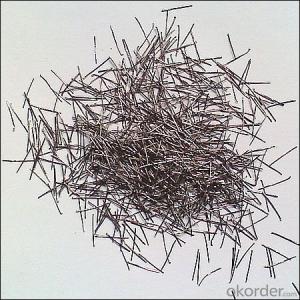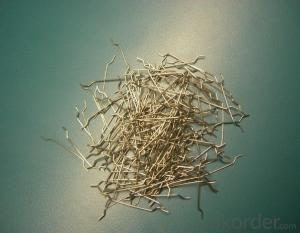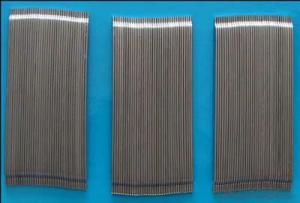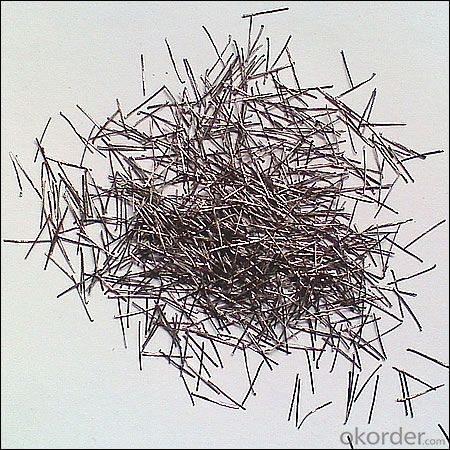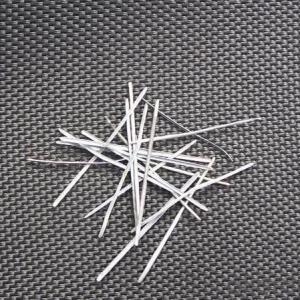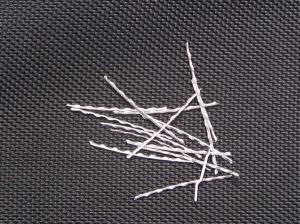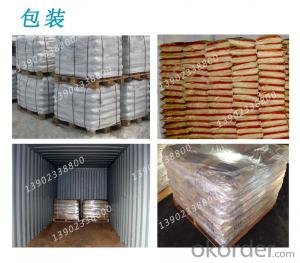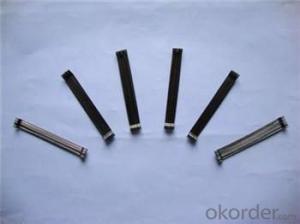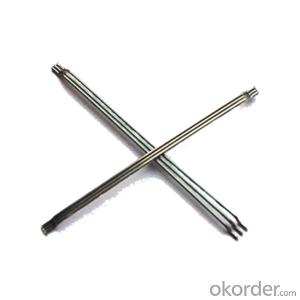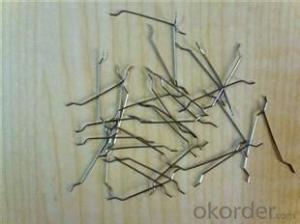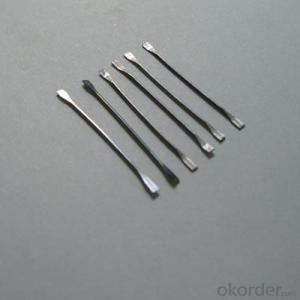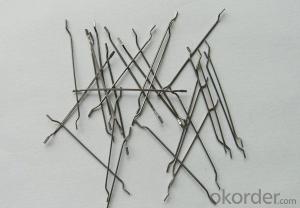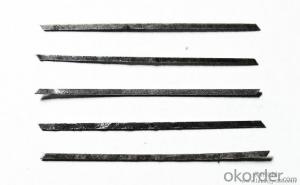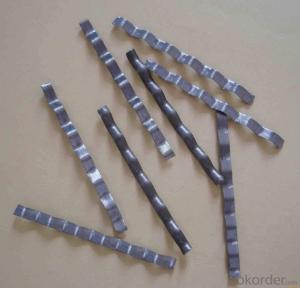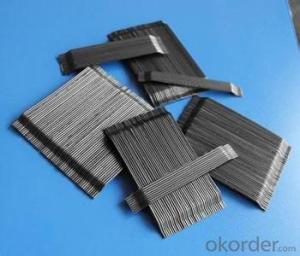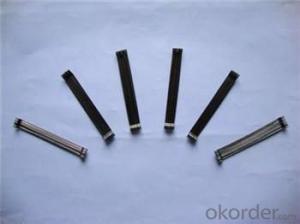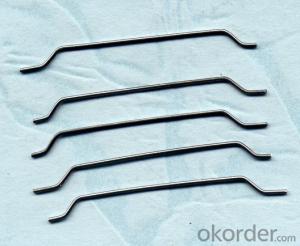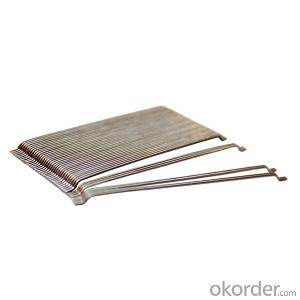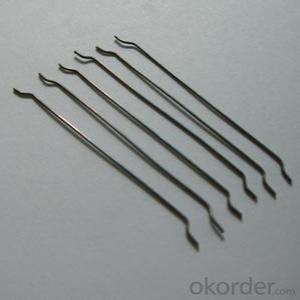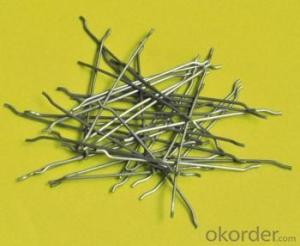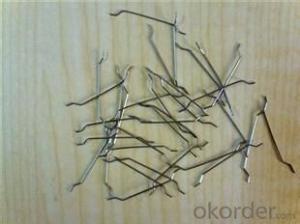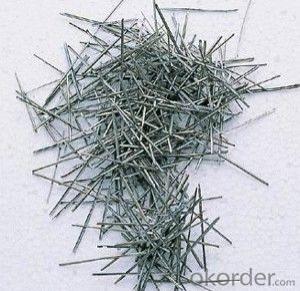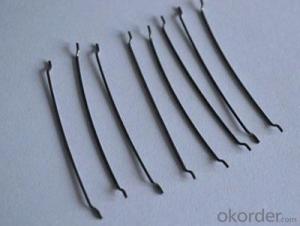Melt Extract Stainless Steel Fiber Airport Runway Cement Buildings
- Loading Port:
- Tianjin
- Payment Terms:
- TT OR LC
- Min Order Qty:
- 1000 kg
- Supply Capability:
- 250000 kg/month
OKorder Service Pledge
OKorder Financial Service
You Might Also Like
Quick Details
Place of Origin: Shandong, China (Mainland)
Model Number: steel fiber
material: steel wire
application: concrete reinocement
type: end hook steel fiber
Product features
steel fiber for conatruction and concrete reinforcement,widely uesd in concrete to improve its stabality end hooked steel fiber ,with its high tensile strength ,good scattering and good combination with cenment material concrete steel fiber is specifically designed to enhance concrete in its hardened state ,the uniform distribution of steel fibers throughout the concrete greatly improve concrete bonding and tensile strengh ,addtionally it provides eceptional load stability and durability ,as reliable and efficient concrete reinforement materisl ,it is widely used in buildings ,bridges,thin roof engineering ,highy way etc.
Specifications
1.hooked steel fiber
2.CE and ISO9001:2008
3.diameter from 0.5mm to 1.2mm
4.competitive price,high quality and service
Hooked Steel Fiber:
1.Diameter:0.5mm-1.0mm
2.Length: 25mm-60mm
3.Material: low carbon steel wire
4.Feature: excellent tensile,high tenacity,against cracking,impact and fatigue
5.Uses: high way,tunnel,building,airport road serface and so on .
Picture

steel fiber concrete reinforced
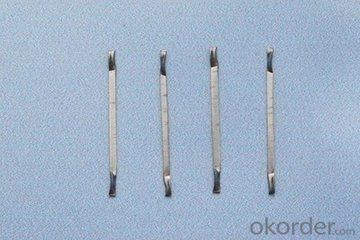
any type steel
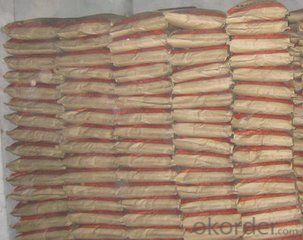
FAQ
we can produce any type steel fiber and of course we can make production according to your requirement
we have specilize in this field for almost 10 years ,with good quality and competitive price
- Q: Can melt extract stainless steel fiber be used in pavement rehabilitation applications?
- Yes, melt extract stainless steel fiber can be used in pavement rehabilitation applications. It offers excellent reinforcement and durability properties, enhancing the strength and longevity of the pavement. Additionally, its resistance to corrosion and high temperature make it suitable for such applications.
- Q: Can melt extract stainless steel fiber be used in retaining wall construction?
- Yes, melt extract stainless steel fiber can be used in retaining wall construction. These fibers are highly durable and have excellent tensile strength, making them ideal for reinforcing concrete structures such as retaining walls. The stainless steel fibers are typically added to the concrete mixture during the mixing process, providing reinforcement throughout the entire structure. This helps to increase the overall strength and durability of the retaining wall, making it more resistant to cracking and shifting. Additionally, the corrosion resistance of stainless steel fibers ensures that the retaining wall will maintain its structural integrity over time, even in harsh environmental conditions. Overall, using melt extract stainless steel fiber in retaining wall construction is a reliable and effective method for enhancing the strength and durability of the structure.
- Q: Can melt extract stainless steel fiber be used in basement walls?
- Certainly! Melt extract stainless steel fiber is a suitable option for basement walls. In construction, stainless steel fibers are widely utilized due to their impressive tensile strength and resistance to corrosion. By incorporating these fibers into concrete or other building materials, the overall strength and durability of the structure can be enhanced. Given the potential presence of moisture and the risk of water damage in basement walls, the use of stainless steel fibers can offer added reinforcement, ensuring long-term stability. Moreover, these fibers can effectively minimize the risk of cracking and shrinkage in the concrete, making them an ideal choice for basement walls.
- Q: What is the tensile strength of melt extract stainless steel fiber?
- The tensile strength of melt extract stainless steel fiber can vary depending on the specific grade and manufacturing process, but it typically ranges from 1000 to 2000 MPa (megapascals).
- Q: What is the effect of melt extract stainless steel fiber on the shrinkage and cracking of concrete?
- The use of melt extract stainless steel fiber in concrete can significantly reduce shrinkage and cracking. The fibers act as reinforcement within the concrete, enhancing its overall tensile strength and improving its resistance to shrinkage. This reinforcement helps to distribute stresses more evenly throughout the concrete, minimizing the formation of cracks and reducing their potential for propagation. Additionally, the stainless steel fibers also provide increased resistance to temperature changes and external loads, further reducing the likelihood of shrinkage and cracking in the concrete.
- Q: Is melt extract stainless steel fiber corrosion resistant?
- Yes, melt extract stainless steel fiber is corrosion resistant.
- Q: How does melt extract stainless steel fiber affect the drying shrinkage of concrete?
- The introduction of melt extract stainless steel fibers can have a significant impact on the drying shrinkage of concrete. When incorporated into the concrete mix, these fibers work to control and decrease the drying shrinkage by enhancing the overall cohesion and tensile strength of the concrete matrix. Throughout the drying process, concrete experiences shrinkage as a result of water evaporation. This shrinkage can lead to cracks and deformations in the concrete, which compromise its integrity and durability. However, by integrating melt extract stainless steel fibers, the concrete's ability to resist shrinkage is improved. The distinctive characteristics of stainless steel fibers, such as their exceptional tensile strength and strong bond with the concrete matrix, enable them to serve as reinforcement within the concrete structure. This reinforcement effectively redistributes the stresses caused by shrinkage throughout the concrete, preventing the formation of large cracks and decreasing overall shrinkage. Moreover, melt extract stainless steel fibers also hinder the spread of microcracks that may arise during the drying process. These fibers act as a barrier, restricting the opening and growth of cracks, thereby reducing the overall drying shrinkage of the concrete. In conclusion, the incorporation of melt extract stainless steel fibers into concrete can greatly enhance its resistance to drying shrinkage. By improving the cohesion, tensile strength, and crack resistance of the concrete matrix, these fibers aid in maintaining the structural integrity of the concrete and minimizing the potential for cracking and deformation caused by shrinkage.
- Q: Does melt extract stainless steel fiber improve the resistance to chloride penetration of concrete?
- Yes, melt extract stainless steel fiber can improve the resistance to chloride penetration of concrete. Chloride penetration is a major cause of corrosion in concrete structures, particularly in coastal or industrial areas where chloride ions are present in high concentrations. The addition of stainless steel fibers to the concrete mix can create a network of reinforcement that enhances the durability and resistance of concrete to chloride attack. The stainless steel fibers act as a physical barrier, reducing the permeability and ingress of chloride ions into the concrete matrix. This helps to prevent or delay the onset of corrosion and extends the service life of the concrete structure. Additionally, the stainless steel fibers can provide additional strength and toughness to the concrete, enhancing its overall performance and durability. Therefore, the use of melt extract stainless steel fiber in concrete can be an effective strategy to improve the resistance to chloride penetration and increase the durability of concrete structures.
- Q: What is the recommended fiber dosage when using melt extract stainless steel fiber in shotcrete?
- The appropriate amount of melt extract stainless steel fiber to use in shotcrete can vary depending on the specific project requirements and desired performance characteristics. Generally, it is recommended to use a fiber dosage of 20 to 40 kilograms per cubic meter (kg/m3) or 1.2 to 2.4 pounds per cubic yard (lb/yd3). This dosage range effectively reinforces the shotcrete and improves its overall durability, crack resistance, and impact resistance. To determine the exact fiber dosage for your project, it is important to consult with the manufacturer or a qualified engineer who can consider the specific needs and requirements.
- Q: Does melt extract stainless steel fiber improve the impact resistance of concrete?
- The impact resistance of concrete is indeed improved by melt extract stainless steel fiber. Concrete mixtures often incorporate stainless steel fibers in order to enhance their mechanical properties, with a particular focus on impact resistance. These fibers serve as reinforcement within the concrete matrix, thereby increasing its tensile strength and ductility. As a result, when the concrete is subjected to impact loads, the stainless steel fibers play a vital role in distributing the energy throughout the structure. This distribution effectively prevents crack propagation and enhances the concrete's ability to withstand impact forces. In addition, the stainless steel's high melting point and corrosion resistance guarantee the long-term durability of the concrete, rendering it an excellent choice for applications that require significant impact resistance, such as industrial floors, pavements, and structures exposed to heavy loads or dynamic forces.
Send your message to us
Melt Extract Stainless Steel Fiber Airport Runway Cement Buildings
- Loading Port:
- Tianjin
- Payment Terms:
- TT OR LC
- Min Order Qty:
- 1000 kg
- Supply Capability:
- 250000 kg/month
OKorder Service Pledge
OKorder Financial Service
Similar products
Hot products
Hot Searches
Related keywords
